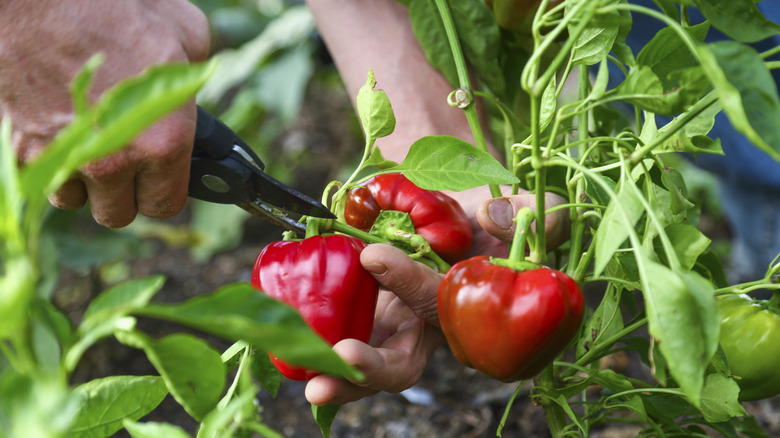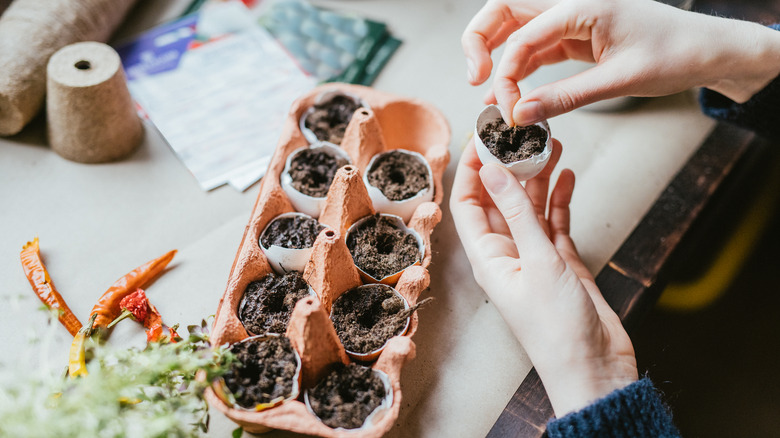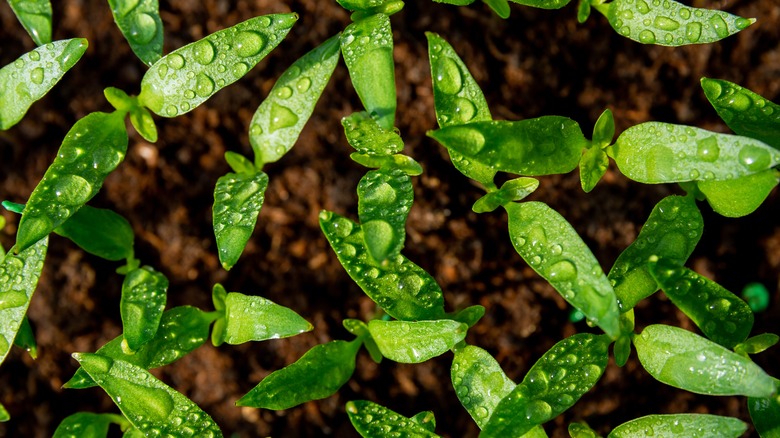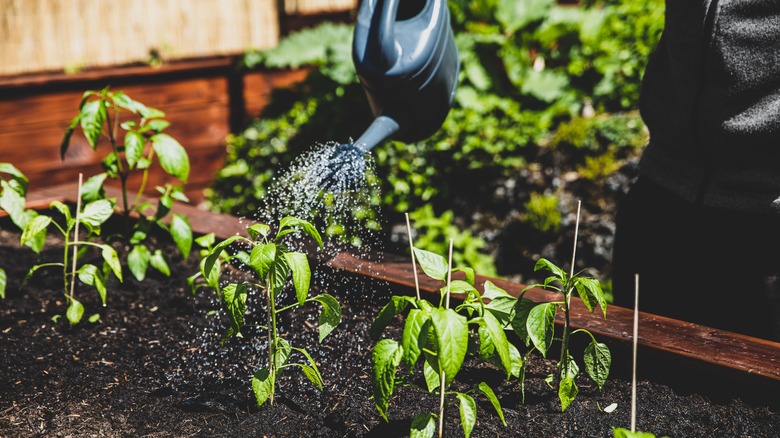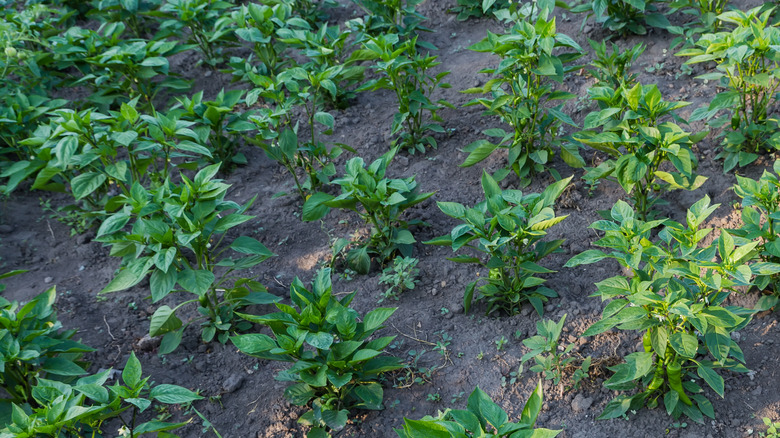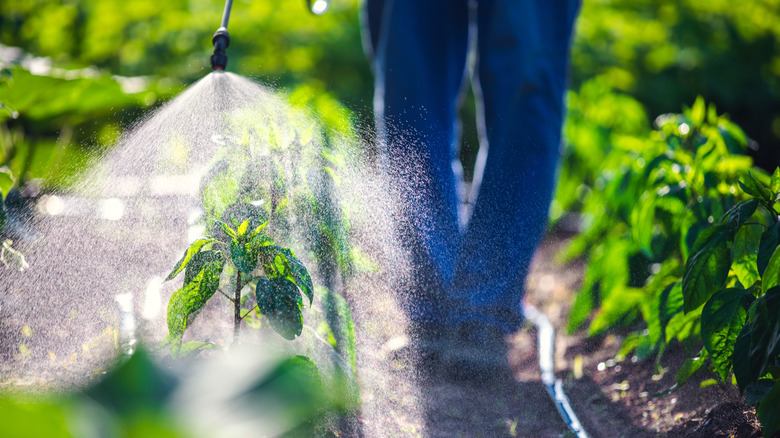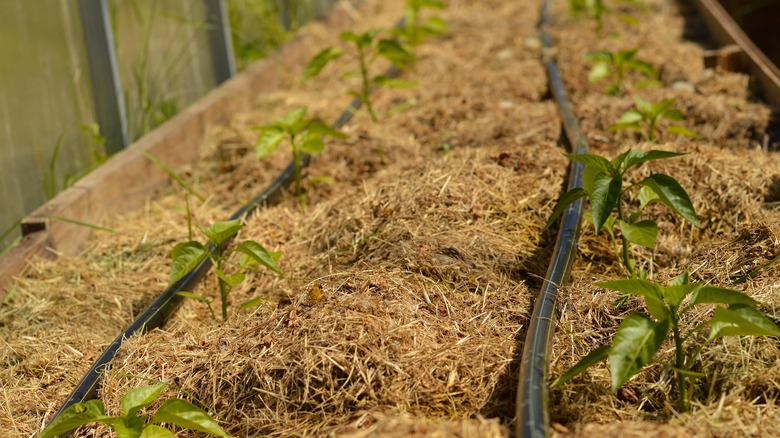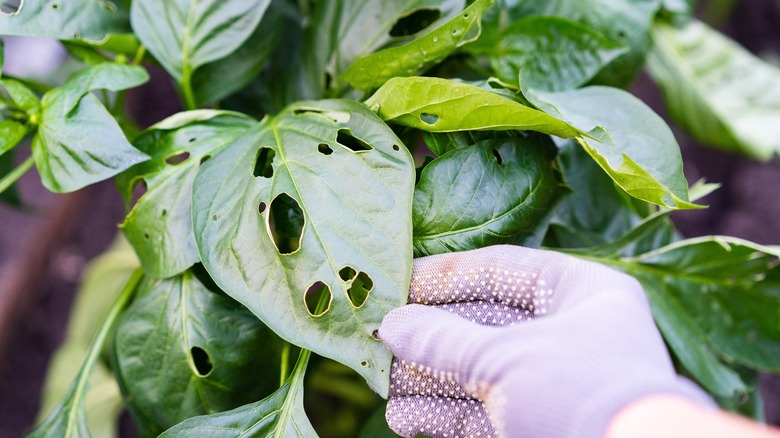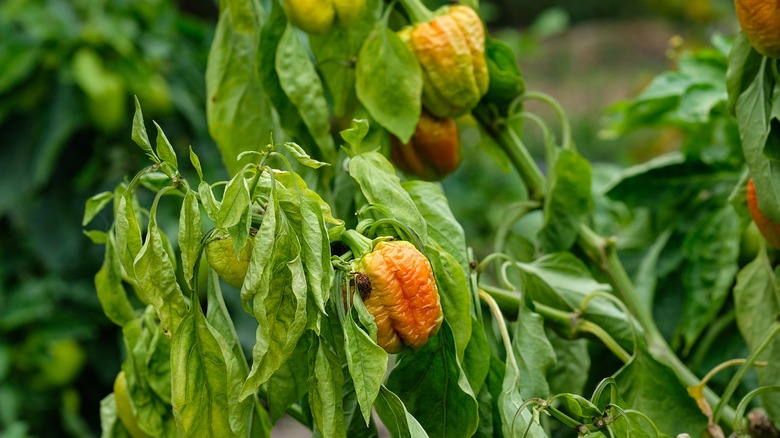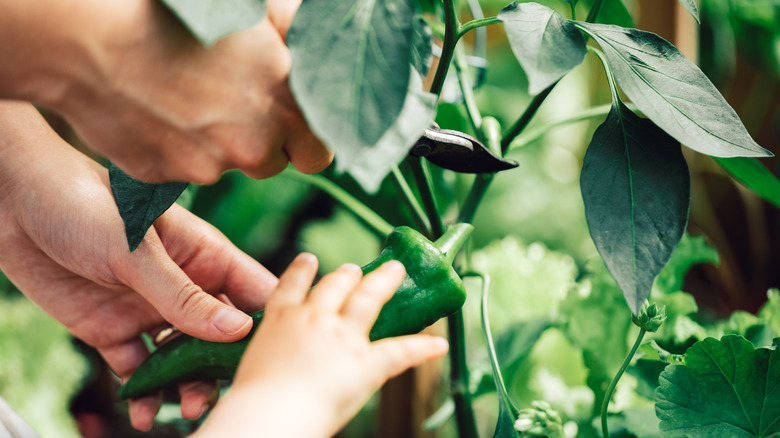9 Common Mistakes Everyone Makes When Growing Peppers
We may receive a commission on purchases made from links.
If you enjoy snacking on peppers, adding them to salads, or incorporating them into delicious stir-fry recipes, you might want to consider growing your own. Not only can you eat fresh peppers straight from your garden, but you'll also be able to freeze, dehydrate, or can the fruits (yes, peppers are technically fruits, not vegetables) so that you can enjoy them all year long. Before you start eagerly planting pepper seeds, you'll want to take a small step back. There are several common mistakes people make when growing peppers.
These mistakes can result in tragedy: the plants might not grow properly, the peppers themselves may not develop as they should, and garden pests or diseases could threaten the crops. Clearly, these are all problems that you don't want to deal with. So, what should you do? Read through the next few sections to learn how to avoid some of the most common mistakes when growing peppers that can lead to these problems and more.
Planting the seeds too soon
We get it. Once you've decided that you want to grow peppers, you want to get the seeds in the ground so that they can start growing. However, if you plant the seeds too soon, you'll be making a mistake that you'll soon regret. Warmer temperatures and plenty of sunlight is needed for pepper seeds to germinate properly. Planting your seeds too early may result in stunted plants, wilting leaves, or pitting. Because the plants won't be as healthy, they may also be more susceptible to plant diseases.
Instead of rushing to put the seeds in the ground, take a look at the calendar and do a little research. You'll want to start your seeds inside, but not until two months before the last expected frost date. This date will vary based on where you live. For example, if you live in South Carolina, the final frost date for the season is probably around the middle of March. However, if you live in Wisconsin, it might not be until early May. Once you've found the average final frost date for your area, subtract two months from it. So, based on the example above, those living in South Carolina should be fine to plant their seeds indoors in mid-January, while Wisconsinites should wait until early March. Avoid transplanting the seeds to your outdoor garden until after the final frost date for your area.
Planting the seeds too closely together
Another mistake many people make when growing peppers is not providing ample space between the seeds. If your seeds are too tightly packed in your garden, they aren't going to grow properly. Their roots will be competing for the same water and nutrients from the soil, meaning one or both of the plants won't get everything they need. Similarly, they'll be too close to each other above the ground, which can lead to further competition for other resources, such as sunlight and airflow.
So, how far apart should you space your pepper plants? First, it is important to know that peppers are a self-pollinating fruit, so there is no such thing as "too much" space between them. The minimum amount of space to leave between the plants can vary slightly based on the variety and how large it grows. For most types of peppers, leaving about 18 inches between the plants is sufficient. If you're planting a larger variety, such as habanero peppers, try to leave a little more space — up to 24 inches — between plants.
Under- or over-watering
Don't make the mistake of depriving your pepper plants of the water they need to grow. However, you also don't want to end up overwatering them. If the plants don't get enough water, they're going to dry out. This can cause the leaves to wilt and may even negatively impact the overall quality of the soil. If there is too much water around the root, the root system also won't be able to properly deliver nutrients to the different parts of the plant, which can result in stunted growth, weaker stems or wilted leaves.
To avoid all of these potential problems, you have to strike the right balance. Give the plants a few days between watering so they can dry out a bit, especially when the temperature outside is cooler. During these times, you may find that you can go between two and three days between watering. However, if it is very hot outside, more frequent watering is often necessary to keep the peppers from getting dehydrated. You'll know it is time to water your crop if the top layer of soil is dry. A moisture meter — such as the XLUX T10 Soil Moisture Sensor Meter — can also help you track the soil conditions to know when you should pull the hose back out.
Growing them in full shade
Be purposeful when deciding where you want to place your peppers in your garden. Don't make the mistake of placing them in a section that is always shaded. Plants grown in full-shade will turn out smaller than those that receive adequate light. These smaller plants will not produce as many peppers, either.
Sunlight is essential for peppers to grow. They need the light to facilitate proper use of the water from the soil to encourage healthy growth and full yields. Choose an area of your garden that receives as much direct sunlight as possible to help support your plants. If no areas of full sunlight are available, you can choose an area with partial-shade, but definitely stay away from any full-shade sections.
Don't forget to also make sure your indoor pepper plants are getting sufficient light before they are transplanted to your outdoor garden. At first, the light they receive should come from grow lights, but as they're getting closer to being ready to go outside, you'll want to harden them off, gradually giving them more time in the direct sun each day.
Not fertilizing them properly
Improper fertilization has the potential to cause serious problems with your peppers. Plants that don't get the right amount of fertilizer may see decreased production of fruits or flowers. They may also grow smaller, yellow, dark, pale, or spotted leaves.
All of these potential problems relate to the essential nutrients of nitrogen, phosphate, and potassium that are found in fertilizers. Nitrogen supports plants in making proteins and amino acids, the building blocks of cells. Phosphate helps ensure the roots grow and develop properly and aids in creating flowers, fruits, and strong stalks. Potassium helps water, carbohydrates and nutrients to move throughout the plant's tissues.
You should start fertilizing your pepper plants about 14 days after you see the first two true leaves. After the initial application, add more fertilizer about once every two weeks. When your plants are still inside, a half-strength blend is appropriate, but after you move them outside, you can switch to a full-strength version.
Not mulching around the plants
You might not see mulching around your plants as a necessity. And, while that may technically be true, skipping this relatively simple step can lead to problems that you won't want to deal with. First, without mulch, weeds are more likely to intrude on your plants. The weeds will interfere with proper air circulation and can even make it more likely for your plants to become plagued with a disease. Plants grown without a layer of mulch cover may not receive enough water. The moisture will evaporate more quickly from uncovered soil, causing your plants to dry out more quickly or forcing you to water them more regularly.
There are different options to consider when choosing mulch for your pepper plants. Consider using grass clippings or compost instead of wood chips. Both of these mulch options will work to minimize weed growth while also delivering additional nutrients to the soil to support healthy plant growth.
Allowing pests to threaten the plants
One thing you don't want to do is to go through all the hard work of planting, watering, and caring for your pepper plants only to have them destroyed by pests. Unfortunately, there are several pests that can threaten your plants, so you'll need to stay on top of monitoring for signs of damage and understand how to clear up infestations before they become a serious problem. A few of the pests that like pepper plants include aphids, pepper maggots, cucumber beetles, thrips, cutworms, and spider mites. Some of the harm these critters can inflict include stunting the growth of the plant, dehydrating it, turning the leaves yellow, chewing holes in the leaves, or even "chopping" down entire seedlings.
Assess your plants multiple times each week for any of these signs of damage and check them for visible pests (make sure you look under the leaves too). The best approach to get rid of the pests will vary depending on which species you're dealing with. Neem oil (like Natria Neem OIl Spray), diatomaceous earth (such as Garden Safe Diatomaceous Earth Crawling Insect Killer), or a solution of soapy water are a few examples of remedies that are effective for removing many different types of pests.
Letting diseases threaten your plants
Pests aren't the only thing that can pose a serious threat to your plant. Unfortunately, there are also many diseases that pepper plants can be susceptible to. A few examples include blight, verticillium wilt, and bacterial leaf spot. Blight can turn the base of the stem black or brown, cover the leaves with brown spots, cause the peppers that are growing to rot, or even kill the entire plant. Verticillium wilt, which is most common in fields where tobacco used to grow, causes the entire plant to wilt, with the problem starting on just one side. Eventually, the pepper plant will no longer be able to stay standing, and it will die. If you live in a humid climate, your pepper plant may be plagued with bacterial leaf spots. Spread through cross-contamination, this disease can lead to yellow-, green-, or brown-spotted leaves or even create bumpy spots over the fruits themselves.
Clearly, you don't want to deal with the harm that these diseases or others can cause. If you notice anything that looks off, work quickly to identify the specific disease, then come up with a course of action to treat it or get rid of the plant before more become impacted. You can often take steps to protect your plants against disease in the first place. For example, blight is spread through pathogens in the soil, so mulching well and using raised beds can help offer some protection and make it less likely that infected soil will splash onto the leaves. Being careful and only using soil from respected companies or individuals can also protect your plants against infection.
Harvesting too early or too late
If you don't harvest your peppers at the right time, you're surely going to be disappointed with the results. If you pick your peppers too early, they are likely to be bitter. However, waiting too long will result in over-ripened fruit that is shriveled and way too soft.
If you're growing bell peppers, it is important to understand that red, yellow, and green peppers all come from the same plant, but at different harvest times. The color of the peppers change as they continue to ripen. They'll start off green, gradually change to yellow, then turn to red. Red peppers have the sweetest taste (and the most nutrients), while green will be less sweet. You'll want to watch the progression through these colors and pick your peppers when they reach your desired sweetness and taste preferences.
While bell peppers get sweeter when allowed to mature on the plant, most hot peppers, such as banana peppers or habanero peppers, become hotter the longer they are left to mature. If you like extreme heat, leave these varieties on the bush for a little longer, or pick them earlier if you want a milder pepper.
